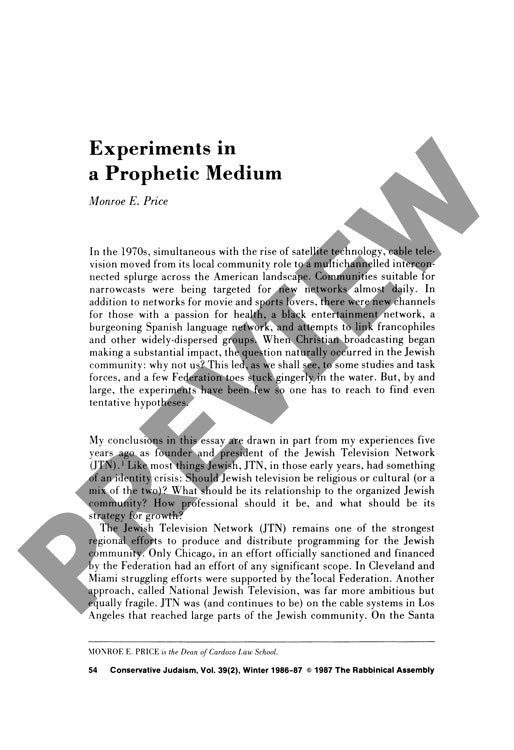Experiments in a Prophetic Medium
Couldn't load pickup availability
Jewish television broadcasting in the 1970s and 1980s represented a bold yet ultimately fraught experiment in religious media, revealing fundamental tensions between cultural preservation and mass communication. Drawing from firsthand experience as founder and president of the Jewish Television Network (JTN), this case study analysis examines various Jewish television initiatives including JTN, National Jewish Television, and community-based efforts in Chicago, Cleveland, and Miami. The investigation explores three critical dimensions: audience targeting strategies, programming format development, and distribution mechanisms. Key findings reveal deep-seated challenges in Jewish television programming, including identity crises between religious and cultural content, tension between community control and creative independence, and difficulties in developing sustainable funding models. Unlike successful Christian television models built around charismatic central figures, Jewish broadcasting encountered significant community resistance to evangelical-style formats. The research identifies three essential components for effective religious television: product creation, distribution networks, and audience development. While Jewish television faces unique structural and cultural obstacles, the medium's prophetic potential and increasing importance in modern literacy necessitate continued investment and experimentation. Future success requires coordinated support from organized Jewish communities, innovative funding mechanisms, and audience-building strategies that leverage existing institutional networks while maintaining creative autonomy.

More Information
-
Physical Description
-
Publication Information
Published 1986-1987
ISBN
-
Publication Credits
Monroe Price

